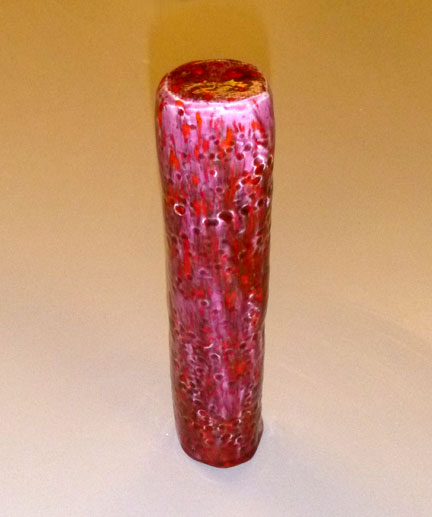Rainsticks are lovely-sounding instruments that are believed to have originated centuries ago in Chile. Native South American tribesmen would harvest dead branches from cactus plants, fill them with small pebbles and cap the ends. During rituals that were intended to implore their gods to send rain, they would tilt the branch, causing the pebbles to trickle down through sharp thorns to imitate the sound of falling rain. No two Rain Sticks are the same and the decoration is unique to each artist.
The teacher demonstrates how to roll slabs and make a closed cylinder in clay. Students are to use rolled-out slabs of clay to make a cylindrical rainstick with clay spikes inserted in a spiral pattern around the stick. Clay pebbles, bundled in a small paper sack are placed in the stick, which is then sealed. The rainstick is decorated with a low-relief and/or carved design.
Evaluation:
4 points -- Quality Workmanship (seams are tight, edges smooth, spike inserts are covered, ect.)
2 points -- Has a Flat Base (self-supported)
3 points -- Added or Carved Decoration
1 point -- Ventilation hole
10 points total.
Steps to make Rainsticks:
1. Beads (style of your choice) Fill one small container. (containers are on the front table)
2. Cylinder (longer is better)
3. Slab (roll using roller and slab sticks)
4. Fill & Close (wrap beads in towel, then put in side cylinder. Attach a slab on both ends and seal it tight)
5. Spikes (roll to look like nails {point on one end, flat head on the other}. Cover the heads to keep them soft while letting the pointed ends harden.) (approx. 20 for a 12" cylinder)
6. Insert spikes (poke holes with the end of a paintbrush) and smooth the surface. Gently roll the cylinder on table for a smoother finish.
7.Decorate (carved or added details)
Poke a ventilation hole in one end.
Developed for Holy Trinity by Rosanne Hansen, 2015


